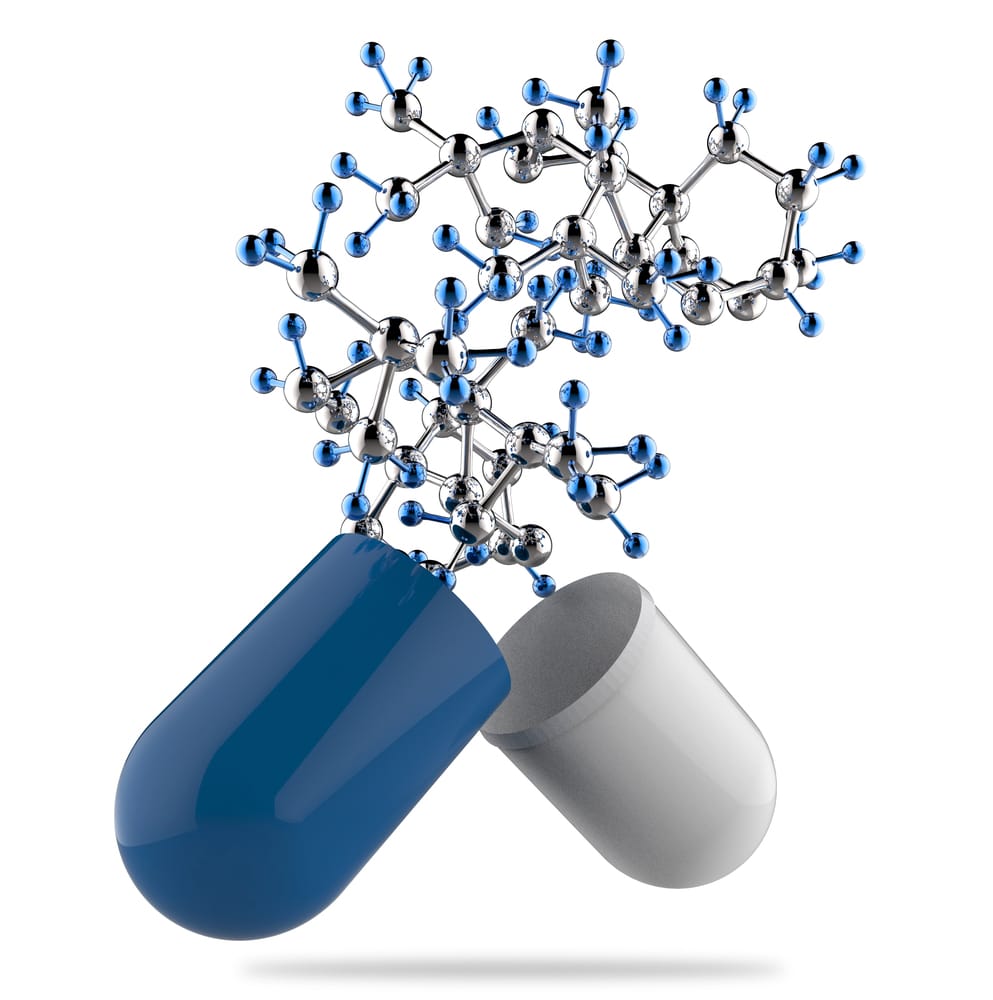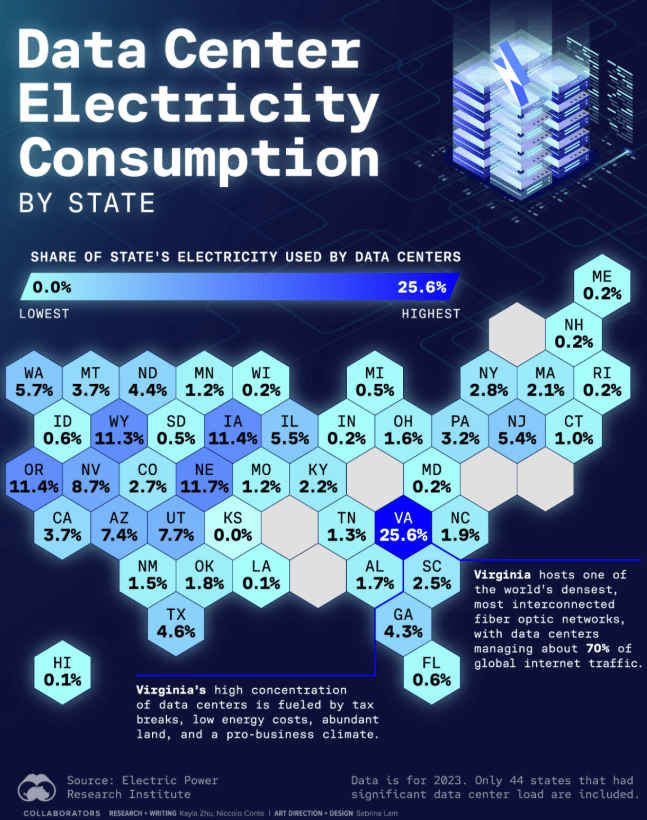Why Pharmaceutical Validation Engineers Are Switching to AI-Powered Compliance Tools
Pharmaceutical validation benefits extend far beyond regulatory compliance capabilities. Validation engineers can unlock approximately $60 million in net present value by accelerating regulatory submissions for a $1 billion asset by just one month [9]. This financial reality has pushed our industry to rethink how we approach computer system validation and compliance documentation.
When we examine the potential impact of modernizing validation processes, the numbers are compelling. Currently, 60% of pharmaceutical executives have already launched generative AI pilots, according to a 2024 survey [1]. Additionally, industry AI spending is projected to grow from approximately $2 billion in 2025 to more than $16 billion by 2034—expanding at nearly 27% annually [1]. This trajectory reflects growing recognition that traditional computer system validation processes, characterized by manual documentation and error-prone workflows, simply cannot meet modern regulatory demands [9].
The scale of validation inefficiencies continues to impact bottom-line performance. AI addresses these challenges through real-time automated systems that instantly detect out-of-specification results in drug manufacturing, identify improper labeling, or flag discrepancies in clinical trial data [9]. Leading companies have accelerated their overall submissions by up to three times compared to the 2020 industry average, potentially extending patent exclusivity during peak revenue years and obtaining roughly $180 million in NPV for assets with $1 billion in peak sales [4].
Organizations that embrace AI-powered compliance tools not only reduce operational costs but also strengthen their regulatory positioning in an increasingly complex environment. The evidence demonstrates how validation engineers are evolving from reactive quality assurance roles into strategic positions that drive both compliance and business value.
Throughout this analysis, we will examine why validation professionals are adopting AI-powered compliance tools, how these technologies are reshaping traditional validation approaches, and the implementation roadmap for organizations ready to make this critical transition.
Why Traditional Validation Methods Are No Longer Enough
Traditional validation methods in the pharmaceutical industry have reached their functional limits due to three converging factors that impact operational efficiency, regulatory compliance, and competitive positioning.
Manual Documentation in Computer System Validation
The validation engineer role has long been constrained by labor-intensive documentation processes that drain resources from strategic activities. Traditional verification techniques remain static and document-centric, heavily dependent on manual processes and extensive paperwork [9]. This approach follows a linear progression that concentrates on predefined stages, creating significant workflow bottlenecks throughout pharmaceutical operations.
Manual CSV processes require tremendous personnel hours for routing documents and obtaining signatures, recreating lost documentation, searching and retrieving paper files during audits, and performing repetitive tasks that pull staff from primary duties [9]. Research shows that many organizations have merely shifted from paper to digital documents without fundamentally changing their approach—essentially moving the same paper-based process to a computer screen while retaining identical inefficiencies [7].
The productivity impact becomes particularly pronounced when documents grow complex. Reviewers spend excessive time interpreting information, further reducing operational efficiency [2]. These delays cascade throughout validation timelines, directly affecting drug development schedules and market access opportunities.
Delays in Regulatory Submissions Due to Human Bottlenecks
Pharmaceutical computer system validation timelines suffer dramatically under traditional methods, with measurable impacts on detection accuracy and intervention rates. Research demonstrates that traditional validation models detect merely 30.5% of possible interventions, whereas automated systems identify 84% [2]. Moreover, automated systems increase pharmaceutical interventions between 2.43 to 3.64 times compared to manual approaches [2].
Data integration presents another critical challenge, as information from multiple departments (clinical, regulatory, medical) must be synchronized [9]. Resource constraints in specialized regulatory documentation fields create further delays, particularly during peak submission periods [9]. Organizational silos primarily hinder communication, leading to misalignment on submission objectives and timelines [9].
Industry experts have identified the core issue: “Much of the delay is about direction, documentation, compliance, and coordination” [9]. This observation highlights how human bottlenecks in validation processes directly impact time-to-market for vital medications, potentially costing millions in lost revenue during peak sales periods.
Compliance Risks in Legacy Validation Workflows
Legacy validation workflows present significant compliance vulnerabilities that threaten regulatory standing and business operations. Manual data checks frequently lead to oversights, such as recording incorrect units of measure and relying on irrelevant datasets [2]. These issues cascade into inaccurate reports, disrupting business operations and jeopardizing regulatory compliance across multiple jurisdictions.
Conventional applications typically need constant code tweaking to accommodate changes in file structures, formats, and column details [2]. Such modifications introduce delays in drug approvals and use cases requiring efficient data processing. QA validation professionals find traditional methods struggling to keep pace with rapid advancements in technology and regulatory expectations [9].
Organizations operating with legacy validation systems face increasing risk of non-compliance as regulatory scrutiny intensifies. Incomplete or inaccurate records raise immediate red flags during regulatory audits [2]. Paradoxically, over-validation leads to wasted time and resources, delayed production schedules, and unnecessary expenses [9].
The pharmaceutical industry requires a more advanced approach to validation—one that addresses these fundamental limitations while enhancing speed, accuracy, and compliance throughout the product lifecycle.
Strategic Shifts in the Role of Validation Engineers
Validation professionals face mounting pressure from increasing workloads and new regulatory requirements, forcing a fundamental reimagining of traditional roles [7]. The 2024 State of Validation report reveals a rapid 28 percentage point increase in digital validation adoption, signaling a decisive shift away from conventional approaches [7]. This transformation reflects deeper changes in how pharmaceutical companies approach compliance, moving from reactive documentation to strategic risk management.
From QA Validation Engineer to Digital Compliance Strategist
Regulatory expectations have evolved beyond routine quality assurance activities. Validation engineers now serve as digital compliance strategists who drive strategic initiatives rather than simply executing predefined protocols. This evolution mirrors broader trends across quality assurance disciplines, where professionals are moving beyond traditional testing toward more influential positions that shape development and compliance [2].
T-shaped skills development forms the cornerstone of this transformation. Modern validation engineers require deep testing expertise in their core domain alongside broad knowledge spanning development, operations, and business areas [9]. Strong analytical capabilities for identifying patterns and potential issues have become essential, as have advanced communication skills for cross-functional effectiveness.
Digital systems increasingly central to pharmaceutical operations have elevated validation engineers into thought leaders who help push the boundaries of software engineering [9]. Their involvement in critical activities like code reviews, sprint planning, and deployment strategies is no longer exceptional—it’s expected [9]. These professionals have become bridges between disciplines, effectively communicating with developers about code while translating technical issues into business impact for stakeholders [9].
Budget pressures, outsourcing trends, and limited internal capacity are simultaneously reshaping how teams approach validation [7]. Many organizations are strategically repositioning their validation personnel as compliance strategists who can navigate these complex dynamics while ensuring regulatory adherence.
Cross-functional Collaboration in Modern Validation Teams
Multi-disciplinary validation teams have become a current Good Manufacturing Practice expectation of the FDA and many other regulatory agencies [2]. This approach helps ensure everything that should be accounted for is properly addressed while bringing multiple disciplines to bear during planning and execution [2].
Cross-functional models allow pharmaceutical companies to bridge the gap between R&D and commercialization, enabling products to reach market faster and more efficiently [9]. Decisions within these integrated teams happen more quickly, efficiencies emerge through iteration, and expertise remains focused around therapeutic areas [9].
Validation team responsibilities typically include defining protocols, assessing risk, executing validation activities, documenting preparation and control, approving protocols, tracking systems, and training others [2]. Support from senior management proves critical for securing necessary resources and empowering team members with decision-making authority [2].
Although no standardized timing exists for forming cross-functional teams, industry consensus suggests “the earlier the better” [9]. These teams must be built around specific skill sets and areas of expertise, with clear communication channels and well-understood decision-making structures [9]. Pharmaceutical organizations increasingly recognize that drug development is inherently multidisciplinary—requiring toxicology, pharmacovigilance, clinical research, manufacturing, legal, and marketing expertise [9].
This collaborative approach ultimately serves getting new, effective medications to patients more quickly [9]. Strategic repositioning of validation engineers and implementation of cross-functional teams are creating more responsive, efficient validation processes suited to today’s complex regulatory environment.
Core AI Tools Reshaping Pharmaceutical Validation
Artificial intelligence has become central to pharmaceutical validation as companies seek measurable improvements in efficiency and compliance accuracy. These technologies address the fundamental limitations of traditional validation approaches while enabling strategic repositioning of validation professionals.
AI-Powered Document Drafting for Regulatory Submissions
McKinsey and Merck co-developed an AI platform that reduced first-draft clinical study report writing time from 180 to 80 hours, simultaneously cutting errors by 50% [4]. This represents a fundamental shift from the labor-intensive documentation processes that have historically burdened validation teams. Such tools generate validation protocols using historical data and regulatory guidelines, decreasing preparation time while ensuring consistency across documentation [5].
The integration capabilities prove equally valuable. These systems connect with existing CTMS, EDC, and safety platforms to extract relevant evidence for validation reports [10]. This connectivity eliminates the manual data gathering that creates bottlenecks in traditional validation workflows.
Real-Time Risk Assessment in Computer System Validation
Risk assessment capabilities now enable validation engineers to identify potential compliance issues before they escalate into regulatory findings. AI algorithms monitor data flows continuously, detecting anomalies or inconsistencies that could indicate breaches or errors [11]. This proactive approach allows pharmaceutical companies to address potential problems preemptively rather than managing compliance failures reactively.
Data integrity throughout the validation lifecycle becomes automated, with systems flagging issues before they impact product quality [5]. This capability addresses one of the most significant vulnerabilities in legacy validation workflows where manual checks frequently lead to oversights.
Predictive Analytics for Equipment and Process Deviations
Pharmaceutical companies now use AI for asset performance management through advanced analytics, creating manufacturing efficiencies and predictive maintenance systems [12]. These tools analyze historical data to identify potential risks and predict the likelihood of system failures [11]. Production line pattern analysis, batch-to-batch comparisons, and anomaly alerts for batches unlikely to meet requirements represent standard capabilities [12].
The visibility into equipment performance offers validation engineers unprecedented control over manufacturing processes. Rather than responding to deviations after they occur, teams can prevent issues that would otherwise require extensive documentation and remediation efforts.
Natural Language Generation for Audit-Ready Reports
Natural language generation technologies streamline the documentation and reporting aspects that consume significant validation resources. These tools automatically generate comprehensive validation reports and audit trails that meet regulatory requirements [11]. AI-powered NLP algorithms can scan thousands of audit reports to detect recurring compliance issues, identifying weak points across suppliers or regions before they escalate into findings [13].
Most valuable to validation engineers, this automation reduces manual documentation burden, freeing them to focus on higher-value strategic activities while maintaining regulatory compliance [11]. The shift from document creation to document oversight represents a fundamental change in how validation professionals spend their time.
These AI implementations demonstrate measurable returns through reduced cycle times, improved accuracy, and enhanced regulatory positioning. Validation engineers gain tools that address traditional workflow limitations while enabling more strategic approaches to compliance management.
How AI Enhances Speed, Accuracy, and Audit Readiness
Recent studies reveal striking performance improvements from AI-powered validation initiatives, with documentation efficiency taking center stage in overall productivity gains.
40% Reduction in Report Drafting Time
The most substantial improvements come from automated document generation, which typically accounts for the largest portion of validation engineer workload. AI-powered tools have demonstrated a 40% productivity increase in pharmacovigilance processing [6]. For clinical study reports, time savings typically reach 30%, with some heavyweight dossiers seeing reductions in the 50-70% range [14]. This acceleration occurs because AI handles first-draft generation while humans remain responsible for accuracy verification.
Real-world implementations demonstrate compelling time savings:
- Document automation tools achieving 60-80% reduction in regulatory drafting time [15]
- Patient narrative creation reduced from four hours to mere seconds [14]
- McKinsey and Merck’s AI platform cutting clinical study report writing from 180 to 80 hours while reducing errors by 50%
For pharmaceutical computer system validation specialists, this means completing validation documentation in days rather than weeks, enabling faster system deployment and regulatory submission timelines.
Automated Audit Trails with Immutable Logs
Modern AI systems create tamper-proof audit trails that precisely document who performed what actions, when, and where [17]. These immutable logs provide complete audit-readiness by recording every action in compliance with ICH Good Clinical Practice, FDA 21 CFR Part 11, and EU Annex 11 [17]. This capability addresses one of the top five audit trail issues found during regulatory inspections—missing or incomplete documentation [18].
Companies implementing secure e-signature systems with immutable logs report 100% audit-ready environments and enhanced data integrity [3]. The audit trails create explainability and underpin information provenance [6], giving validation engineers a significant compliance advantage during regulatory reviews.
Improved Data Integrity in GxP Environments
Data integrity forms the backbone of pharmaceutical regulatory compliance. AI introduces real-time process verification, allowing validation teams to monitor and validate processes dynamically [19]. This capability enables immediate detection of out-of-specification results, prompting corrective action workflows directly in quality management systems [20].
The contrast with traditional approaches is substantial. Previously, compliance issues might remain undetected until formal review cycles, creating risks of batch failures or regulatory findings. AI-enabled validation maintains strong controls and transparent processes that preserve regulatory confidence [1] while enabling validation engineers to focus on strategic activities rather than manual monitoring tasks.
Implementation Roadmap for AI-Driven Compliance
Building an effective AI implementation strategy for pharmaceutical validation requires systematic planning that addresses technology, people, and regulatory considerations simultaneously. Organizations cannot simply purchase new software and expect transformational results.
Assessing AI Readiness in Validation Teams
Current industry data reveals significant readiness gaps across pharmaceutical organizations. Only 14% of large biopharma companies and just 3% of small companies are currently AI-ready [21]. This disparity highlights the critical importance of thorough readiness assessment before implementation.
Validation teams should evaluate three fundamental areas:
Data quality and standardization represents the foundation of successful AI deployment. AI systems require high-quality, standardized data to function effectively [22]. Organizations must audit their current data collection practices, identify inconsistencies, and establish standardization protocols.
IT infrastructure capabilities determine whether organizations can process the immense amounts of validation data that AI systems generate. Scalable cloud solutions and secure storage systems become essential [22]. Companies without adequate infrastructure face significant delays and cost overruns during implementation.
Current data governance maturity affects long-term success. Organizations must establish standardized data models that support AI algorithm training and validation [8]. Without mature governance frameworks, AI systems cannot deliver reliable, auditable results.
Integrating AI with Existing RIMS and CTMS Platforms
Successful integration hinges on seamless connectivity with existing clinical data systems. For validation engineers, this means adopting modern data exchange frameworks to avoid workflow disruptions [22]. Organizations should establish comprehensive data governance including master data management systems that maintain consistent terminology across different functional areas [8].
Training Validation Engineers on AI Tools and Governance
Pharmaceutical computer system validation requires upskilling in-house specialists in AI concepts. Training should cover three critical areas:
- Algorithm validation protocols that demonstrate AI system accuracy [8]
- Change control procedures for AI model updates [8]
- Audit trail systems that track AI decision-making processes [8]
Establishing dedicated ‘AI Quality’ functions working alongside traditional quality assurance departments has proven effective [23]. These specialized teams bridge technical AI capabilities with regulatory compliance requirements.
Ensuring Global Regulatory Alignment (FDA, EMA, ICH)
AI implementations must comply with existing regulatory frameworks including ICH guidelines for Good Clinical Practice, FDA regulations for clinical investigations, and European Medicines Agency guidelines [8]. The FDA’s Digital Health Center of Excellence now provides cross-cutting guidance across software-based medical products [24]. Similarly, the EMA adopts a structured approach prioritizing rigorous upfront validation before AI systems integration [24].
Organizations operating across multiple jurisdictions must ensure their AI systems meet the most stringent requirements among all relevant regulatory bodies. This proactive approach prevents costly redesigns and deployment delays.
Conclusion
Pharmaceutical validation stands as a pivotal strategy for organizations seeking both operational efficiency and regulatory excellence. Throughout this analysis, we have seen how AI-powered compliance tools address fundamental limitations in traditional validation approaches while delivering measurable business value. This dual benefit makes modernization not merely an option but a necessity for forward-thinking pharmaceutical companies.
The business case for AI adoption remains undeniably strong. Document drafting improvements alone demonstrate remarkable time savings, while automated audit trails provide the compliance confidence that regulatory environments demand. Companies implementing these solutions report dramatic acceleration in submission timelines, translating directly to extended patent exclusivity and enhanced market positioning.
Beyond immediate operational improvements, AI-driven validation delivers lasting strategic advantages. Validation engineers evolve from reactive quality assurance roles into digital compliance strategists who drive business outcomes. Cross-functional collaboration becomes the norm rather than the exception, breaking down silos that traditionally hindered submission timelines. Real-time risk assessment capabilities enable proactive problem resolution rather than costly remediation efforts.
The implementation pathway requires careful attention to readiness assessment, system integration, and regulatory alignment. Organizations must evaluate their data quality, infrastructure capabilities, and governance maturity before proceeding. Training validation teams on AI concepts and establishing clear change control procedures prove equally critical for long-term success.
The regulatory landscape continues to evolve, with FDA, EMA, and ICH frameworks adapting to accommodate AI technologies. Organizations that establish robust validation protocols today position themselves advantageously for future regulatory developments and competitive pressures.
The evidence clearly shows AI-powered compliance tools represent a strategic opportunity where operational efficiency aligns perfectly with regulatory requirements. Pharmaceutical companies that embrace these technologies now will find themselves better positioned for accelerated drug development timelines, enhanced compliance confidence, and improved patient outcomes. The question facing validation professionals today should not be whether to adopt AI-powered tools but rather how quickly they can implement these essential capabilities.
Ready to modernize your validation processes? Contact us today for a comprehensive assessment of your current validation capabilities and a strategic roadmap for AI implementation.
References
[1] – https://www.mckinsey.com/industries/life-sciences/our-insights/rewiring-pharmas-regulatory-submissions-with-ai-and-zero-based-design
[2] – https://www.pwc.com/us/en/industries/health-industries/library/computer-system-validation.html
[3] – https://www.mahalo.health/insights/how-ai-is-automating-compliance-in-clinical-research?utm_mpdid=$device:6d6d7ad1-51f4-4b35-9224-9274593b1cb3
[4] – https://www.freyrsolutions.com/blog/real-time-compliance-monitoring-with-ai-a-new-era-for-pharma-companies
[5] – https://www.avslifesciences.com/blog-post/validation-strategy-in-pharma-4-0-comparing-modern-and-traditional-methods
[6] – https://astrixinc.com/blog/6-common-challenges-of-paper-based-computer-system-validation-csv-and-how-to-digitize-them/
[7] – https://shiftsync.tricentis.com/testing-development-methodologies-69/moving-beyond-the-document-in-computer-systems-validation-471
[8] – https://pharmuni.com/2024/09/25/common-pitfalls-in-csv-documentation-and-how-to-avoid-them/
[9] – https://www.sciencedirect.com/science/article/pii/S1130634323005925
[10] – https://criterionedge.com/identifying-and-mitigating-common-bottlenecks-in-pharmaceutical-documentation/
[11] – https://www.usatoday.com/story/special/contributor-content/2025/09/04/gen-ai-prescription-uncovering-hidden-bottlenecks-to-accelerate-drug-approvals-and-save-lives/85973419007/
[12] – https://firsteigen.com/blog/data-quality-issues-affecting-the-pharmaceutical-industry-finding-a-solution/
[13] – https://ispe.org/pharmaceutical-engineering/how-validation-evolving-2025-key-trends-revealed
[14] – https://www.linkedin.com/pulse/comprehensive-career-transition-plan-qa-professionals-mohammed-ahmed-bqdlc
[15] – https://www.lambdatest.com/blog/qa-new-role-in-digital-transformation-part-one/
[16] – https://www.thefdagroup.com/blog/creating-life-science-validation-team
[17] – https://www.pharmavoice.com/news/2006-09-cross-functional-teams/616247/
[18] – https://kneat.com/article/ai-advantage-in-pharma/
[19] – https://www.mastercontrol.com/gxp-lifeline/validation-4.0-ai-transforming-life-sciences-quality-management/
[20] – https://jafconsulting.com/blog/leveraging-artificial-intelligence-in-computer-systems-validation/
[21] – https://nexocode.com/blog/posts/predictive-analytics-in-pharmaceutical-manufacturing/
[22] – https://www.rephine.com/resources/blog/nlp-in-pharma-audits-unlocking-compliance-insights/
[23] – https://www.ibm.com/new/product-blog/reducing-the-time-taken-to-write-regulatory-submissions-by-over-75-introducing-our-accelerator
[24] – https://www.drugdiscoverytrends.com/as-fda-pushes-agency-wide-generative-ai-pharma-pilots-show-similar-tools-can-cut-clinical-study-report-drafting-time-by-30-or-more/
[25] – https://www.datacreds.com/post/how-gen-ai-is-improving-aggregate-reporting-and-data-analysis-in-pharma
[26] – https://www.lexjansen.com/pharmasug/2024/AP/PharmaSUG-2024-AP-424.pdf
[27] – https://zamann-pharma.com/2025/04/23/top-5-audit-trail-issues-found-in-regulatory-inspections/
[28] – https://www.agilisium.com/case-studies/ensuring-compliance-e-signature-with-immutable-audit-trail-for-gene-therapy-workflow
[29] – https://perfval.com/artificial-intelligence-in-validation/
[30] – https://clarkstonconsulting.com/insights/ai-in-gxp-regulated-environments/
[31] – https://www.pharma-iq.com/clinical/interviews/ai-readiness-in-biopharma-overcoming-infrastructure-talent-and-data-challenges
[32] – https://www.medable.com/knowledge-center/guides-back-to-basics-agentic-ai-and-how-its-impacting-clinical-trial-research
[33] – https://www.kamithinktank.com/clinical-foundational-guide
[34] – https://pmc.ncbi.nlm.nih.gov/articles/PMC12195787/
[35] – https://www.fdli.org/2025/07/regulating-the-use-of-ai-in-drug-development-legal-challenges-and-compliance-strategies/




